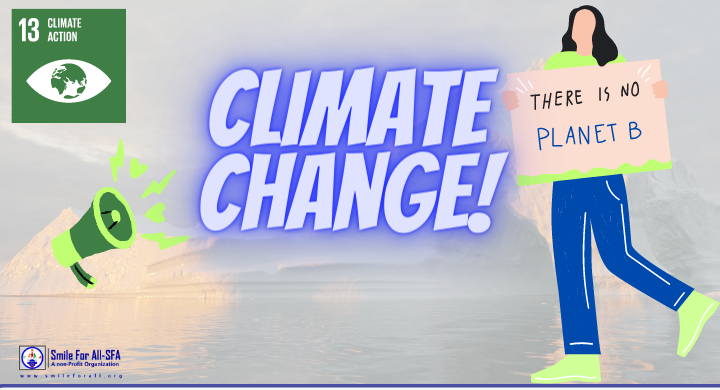Climate change: what it is and how it affects our planet
Climate change is one of the biggest environmental challenges facing our planet today. It refers to the long-term changes in temperature, precipitation, and weather patterns that are caused by human activities such as burning fossil fuels and deforestation. These changes have a profound impact on the environment, ecosystems, and human health. In this blog post, we will explore the causes and effects of climate change, and what we can do to mitigate its impacts.
Causes of climate change
The main cause of climate change is the increase in greenhouse gases in the atmosphere. Greenhouse gases like carbon dioxide (co2), methane (ch4), and nitrous oxide (n2o) trap heat from the sun in the atmosphere, leading to the warming of the planet. Human activities such as burning fossil fuels for energy, deforestation, and industrial processes have dramatically increased the levels of these gases in the atmosphere, leading to the acceleration of climate change.
Effects of climate change
The effects of climate change are widespread and far-reaching. Rising temperatures have led to melting glaciers and ice caps, causing sea levels to rise and threatening coastal communities. Extreme weather events such as hurricanes, floods, and droughts have become more frequent and intense, leading to crop failures, water shortages, and displacement of people. Changes in weather patterns have also affected ecosystems, causing shifts in animal and plant populations and threatening biodiversity.
| Climate Change Effects on Global Temperature | Temperature Change | Effects |
|---|---|---|
| Increased heat waves | 1.5 – 4.5°C increase | More frequent and severe heat waves, leading to health risks and stress on ecosystems |
| Melting ice caps and glaciers | 2.0 – 4.5°C increase | Rising sea levels, affecting coastal communities and habitats |
| Changes in precipitation patterns | 1.5 – 4.5°C increase | More frequent and severe droughts and floods, affecting agriculture and water resources |
| Ocean acidification | 0.1 pH decrease | Harm to marine life, including shellfish and coral reefs |
| Biodiversity loss | 1.5 – 4.5°C increase | Changes in ecosystems and loss of plant and animal species |
| Increased frequency and intensity of extreme weather events | 1.5 – 4.5°C increase | More frequent and severe hurricanes, tornadoes, and storms |
This table provides information on some of the effects of climate change on global temperature, including increased heat waves, melting ice caps and glaciers, changes in precipitation patterns, ocean acidification, biodiversity loss, and increased frequency and intensity of extreme weather events. The table includes data on the expected temperature change and the effects of each of these factors
Mitigating climate change
To mitigate the impacts of climate change, we need to take action at both individual and societal levels. At the individual level, we can reduce our carbon footprint by using energy-efficient appliances, driving less, eating a plant-based diet, and using renewable energy sources like solar and wind power. At the societal level, we need to transition to a low-carbon economy by investing in renewable energy and phasing out fossil fuels. We also need to protect and restore natural ecosystems, such as forests and wetlands, that can absorb carbon dioxide from the atmosphere.

